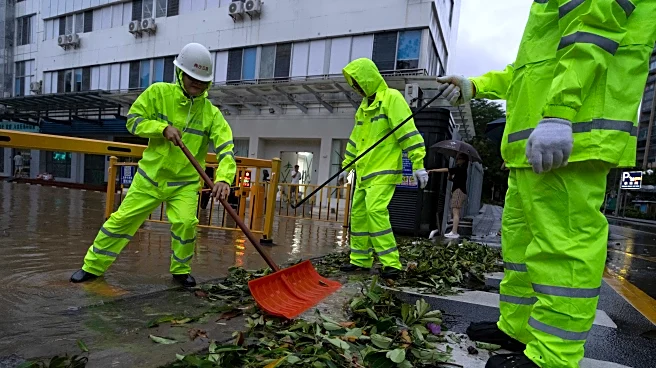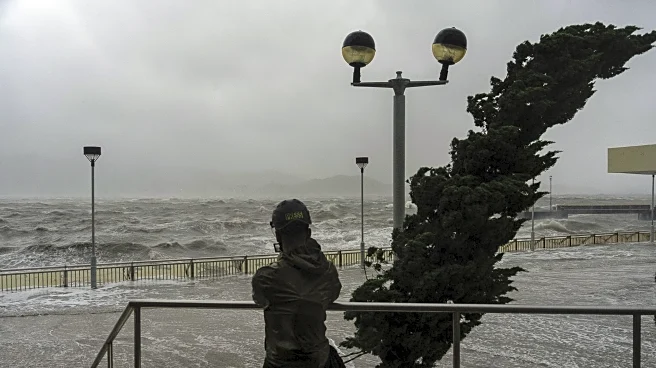What's Happening?
Super Typhoon Ragasa has caused significant disruptions in southern China and Taiwan, leading to port closures and diversions. The typhoon, which formed in the Western Pacific, reached category 5 hurricane strength with wind speeds exceeding 100 knots. While Taiwan was spared the worst, a levee failure in Hualien county resulted in 14 fatalities. In southern China, particularly in Guangzhou, the typhoon prompted shutdowns at ports, airports, and public places. The storm's impact was felt just before China's 'Golden Week' holiday, affecting major container-freight hubs in Hong Kong, Shenzhen, and Guangzhou.
Why It's Important?
The disruptions caused by Typhoon Ragasa have significant implications for global shipping and trade, particularly as they coincide with the 'Golden Week' holiday, a peak period for shipping activity. The closure of major ports in southern China could lead to delays in the supply chain, affecting industries reliant on timely shipments. Additionally, the economic impact on the affected regions could be substantial, with potential losses in tourism and local business activities. The situation underscores the vulnerability of global trade networks to natural disasters.
What's Next?
As the region recovers from Typhoon Ragasa, attention is turning to Storm Opong, which is expected to strengthen into a typhoon and follow a path across southern Luzon and into the South China Sea. This could lead to further disruptions in the coming days. Authorities and businesses in the affected areas are likely to focus on recovery efforts and preparing for potential future impacts. The situation may prompt discussions on improving infrastructure resilience to withstand such natural events.












